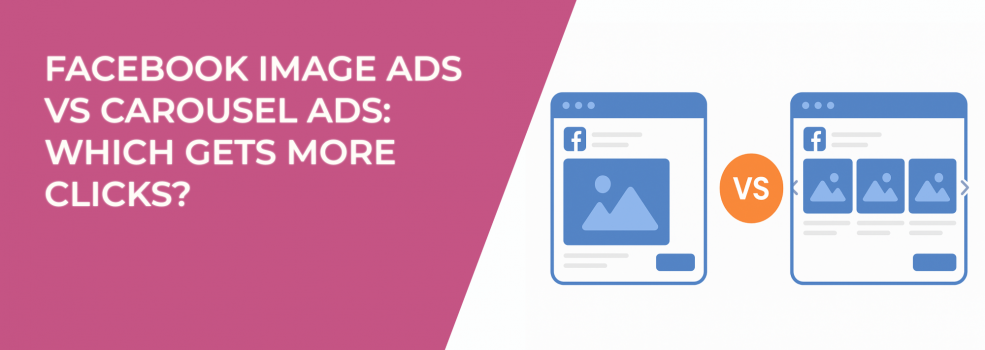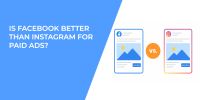When you set up a Facebook campaign, one of the first creative decisions you’ll face is format. Do you go with a single, eye-catching image ad, or lean into a carousel that allows for multiple visuals in one unit? Both options can drive results, but their effectiveness depends heavily on your audience, your product, and your campaign goals.
So, which ad type actually gets more clicks? Let’s dig deeper.
The Appeal of Facebook Image Ads
Image ads are the simplest format on Facebook. A single photo, paired with a headline, description, and call-to-action button. Their strength lies in clarity.
When done well, a static image can capture attention instantly. For example, a striking lifestyle photo of a product in use can communicate value in less than a second. That speed matters, especially on mobile, where users scroll quickly and only pause when something grabs them.
Here are a few situations where single image ads tend to shine:
-
Driving fast clicks to a landing page when you want minimal distraction.
-
Testing offers or creatives quickly since image ads are easier and faster to produce.
-
Promoting a single product or service where the message doesn’t need multiple visuals.
Advertisers who want simplicity, low cost of production, and broad reach often start with image ads. But there’s a catch: they rely heavily on that one visual to carry all the weight. If the creative misses the mark, performance drops sharply.
If you want a broader view of what formats Facebook offers, check out The Ultimate Guide to Facebook Ad Formats where we break down every option in detail.
The Case for Carousel Ads
Carousel ads allow advertisers to showcase up to 10 images or videos in a single ad unit. Users can swipe or click through them, almost like a mini-story.
This format is ideal when you need to highlight variety, features, or steps in a process. A clothing brand, for example, might show different outfit combinations across cards. A SaaS company could illustrate product benefits in sequence.
Benefits of carousel ads include:
-
Storytelling potential — each card builds on the previous one.
-
Higher engagement rates when the content feels interactive.
-
More space to test visuals and copy without creating multiple separate ads.
-
Upselling opportunities by placing higher-value products later in the carousel.
That said, carousels can backfire if they’re too cluttered or if the sequence doesn’t make sense. Users won’t swipe endlessly unless the first card hooks them.
If you’re experimenting with carousels and other formats, you might also find value in Creative Formats That Convert: Carousel, Instant Forms, or Reels, which compares where each format works best.
Which Format Gets More Clicks?
The truth: it depends. Performance varies by industry, audience, and offer.
Studies and case reports often suggest that carousel ads generate higher engagement because of their interactive format. However, higher engagement doesn’t always equal more conversions. A single image ad with a strong offer can sometimes deliver better click-through rates and cost-per-click than a carousel that spreads attention across multiple cards.
Ask yourself: What is the main action I want from the user?
-
If it’s a quick visit to a landing page, an image ad usually performs well.
-
If it’s educating or showcasing multiple items, a carousel has the upper hand.
But here’s where it gets interesting. Clicks alone don’t tell the whole story. An image ad might bring in more traffic, but if those visitors bounce right away, the higher CTR doesn’t really matter. On the other hand, carousels may attract fewer total clicks but deliver more qualified users who actually explore your product or service.
In other words, the “winner” isn’t just about click volume. It’s about the quality of those clicks, the intent behind them, and how well the ad format matches your campaign goal.
How to Decide for Your Campaigns
The smartest approach is to test both formats side by side. Facebook’s algorithm rewards fresh creatives, and split-testing image vs. carousel ads will reveal which resonates more with your specific audience.
When testing, keep these tips in mind:
-
Match format to intent. Use images for speed, carousels for depth.
-
Invest in design quality. A poor image ad or a sloppy carousel won’t perform, no matter the format.
-
Start with one strong hypothesis. For example: “Will a single bold image drive more clicks than a carousel with product variety?”
-
Track beyond clicks. Look at conversion rate, cost per lead, and ROAS to see the full picture.
The real advantage of testing is that you stop guessing and start working with data. Over time, you’ll notice patterns in what your audience prefers. Maybe image ads drive cheap traffic but carousel ads convert more buyers. Or perhaps both formats perform differently depending on the season, the offer, or the audience segment.
By documenting results and refining your creatives based on actual performance, you create a cycle of continuous improvement. Instead of relying on industry averages, you’ll know exactly how your prospects respond — and that insight is far more valuable than any generic benchmark.
For a structured approach to testing, you might like Key Strategies for Facebook Ad Testing: What You Need to Know, which covers how to design smarter experiments that lead to faster insights.
Final Thoughts
There isn’t a universal winner between Facebook image ads and carousel ads. Both formats have their place in a smart advertiser’s toolbox. The real question isn’t which one always gets more clicks, but which one fits your campaign goals, audience behavior, and creative strategy at a given moment.
In practice, most successful advertisers run both. They use image ads for speed and simplicity, and carousels for storytelling and product depth. The key is to keep testing, keep refining, and stay curious about how your audience responds.
After all, what works today might not work tomorrow — and that’s exactly what makes digital advertising so dynamic.

